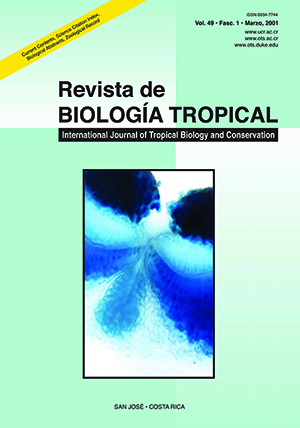Abstract
The seed of Stylosanthes hamata is characterized by it´s a high level of dormancy, which is imposed by seed-coat impermeability to water entry (harseededness or hard-seed condition). The level of hardseededness between upper and lower articulations of seven diploid and five tetraploid accessions was studied under tropical conditions. Germination tests on naked seeds (relative humidity: 55-65%, constant temperature: 27-30º C, photoperiod: 12/12 hr) showed that hard-seed percentage was, in most cases, over 85% independent of ploidy level and seed position within the fruit. Histochemical analysis indicated that hardseededness in this species was associated with a completely sealed microphile and hilum. This feature was also associated to: a) an epidermis consisting of a palisade-like layer of macrosclereids, b) a like-line at the outermost region of these cells and c) a high concentration of hydrophobic compounds located all across the seed-coat.##plugins.facebook.comentarios##

This work is licensed under a Creative Commons Attribution 4.0 International License.
Copyright (c) 2001 Revista de Biología Tropical
Downloads
Download data is not yet available.


